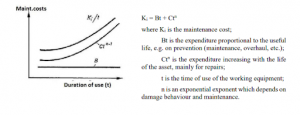Lesson 6: Canges in strategy choice criteria
In this lesson, we will explore the evolution of maintenance strategies over different industrial eras, from Industry 1.0 to Industry 4.0. We’ll understand how changes in technology, production methods, and economic factors have influenced the criteria for selecting maintenance strategies.
Introduction
- Maintenance strategies have evolved significantly over time, adapting to changes in industry, technology, and economic needs.
- We’ll examine how each industrial era shaped the criteria for choosing maintenance strategies, from individual craftsmanship to the era of automation and now the digital revolution.
Industry 1.0
- In the early days of Industry 1.0, individual or small-scale production was prevalent.
- Creativity and adaptability were essential as machinery quality, materials, and assembly were inconsistent.
- Maintenance involved basic adjustments and lubrication to address wear and tear.
- There was no comprehensive maintenance strategy to prevent unexpected breakdowns.
Industry 2.0
- Industry 2.0 introduced mass production, assembly lines, and electricity.
- Downtime losses due to equipment failures became a significant concern.
- Planned Preventive Maintenance (PPM) emerged as a strategy to prevent unexpected failures.
- PPM improved predictability, reduced maintenance workload, and minimized unplanned downtime.
- However, it sometimes led to unnecessary part replacements.
Industry 3.0
- Industry 3.0 represents a period characterized by a mix of maintenance strategies.
- The widespread use of technical diagnostic tools and methods became prominent.
- Sensor technology, digital instruments, and diagnostic sensors allowed for data-driven maintenance decisions.
- Online diagnostics emerged, enabling real-time monitoring and decision-making in industries like wind energy.
Industry 4.0 and Maintenance 4.0
- In the current Industry 4.0 era, technology plays a central role.
- Maintenance 4.0 integrates automation, data analytics, artificial intelligence, and robotics.
- Equipment components are equipped with diagnostic sensors transmitting data for real-time analysis.
- The Maintenance 4.0 approach minimizes human labor, reduces downtime, and enhances efficiency.
Maintenance Costs and Sustainability
- Analyzing maintenance costs revealed that around 60% of expenses are due to damage and loss from frequent faults.
- Companies are realizing that preventing faults is more cost-effective than repairing them.
- The sustainability of maintenance involves factors like material and energy use and the environmental impact of lubricants and additives.
- Assessing sustainability in maintenance requires a comprehensive understanding of costs and resource utilization.
Conclusion
- The criteria for selecting maintenance strategies have evolved with changes in industry and technology.
- Companies now combine various maintenance strategies, creating a maintenance mix to meet their specific needs.
- Technology, data analytics, and automation are driving Maintenance 4.0, emphasizing real-time monitoring and efficiency.
